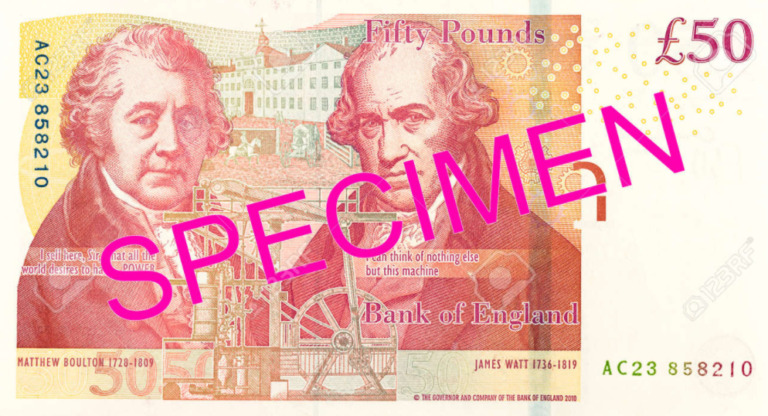To understand Industry 4.0 and its evolution, we will examine the journey that started with Industry 1.0, also known as the First Industrial Revolution. On the road from Industry 1.0 to Industry 4.0, we will meet the technologies developed during each industrial revolution and the inventors behind industrial innovations. When did the industrial journey in history begin? Let’s take a look together.
What is industry 1.0?
The term “Industry” is derived from the Latin word “industria” and describes the process of transforming raw materials into finished or semi-finished products using human labor. This process typically involves the use of energy and machinery, referring to large-scale production systems. Industry 1.0 began with the replacement of human labor by machines, making production processes more efficient.
Industry 1.0 ( 1760 – 1830 )
Start year ; 1760
Finish year ; 1830
Starting country ; England
In the First Industrial Revolution, which started in the 1760s and lasted into the 1830s, manufacturing evolved from manual labor to machine-based production. Increasing in quantity and improving in quality, the industrial machines used steam power. Steam-powered machines replaced manpower and marked the beginning of the technological revolution in industry. Beginning in the United Kingdom, the Industrial Revolution spread rapidly across Europe and the USA.
Industry 1.0 can also be deemed as the beginning of industrialization, establishing an industrial culture focused on efficiency, mass production, and quality improvement.
The First Power Loom
The first power loom was designed in 1787 by Edmund Cartwright and first built that same year. This mechanical invention is regarded as the most important development leading the industrial revolution in textile manufacturing. With this breakthrough, productivity increased 40-50 times, and textile production accelerated.

First Steam Engine
The first commercially successful engine that could transmit continuous power to a machine was developed in 1712 by Thomas Newcomen. He invented the steam engine, and James Watt later improved it for industrial use.
Watt attempted to commercialise his invention, but experienced great financial difficulties until he entered a partnership with Matthew Boulton in 1775. The new firm of Boulton and Watt eventually became a major player in the steam engine industry. By 1824, they had built 1164 steam engines, mostly used to pump water from mines.
James Watt played an important role in the formation of the Industrial Revolution and mechanical engineering. The unit “watt” is named after him and is used in the SI unit system to measure power output. This proposal came from C. William Siemens in 1882.

“Watt” is the unit of power in the International System of Units (SI) and is named after the Scottish inventor James Watt. This unit name was first proposed by C. William Siemens during his Presidential Address at the 52nd Congress of the British Association for the Advancement of Science in August 1882.

The First Steamships
On August 22, 1787, American inventor John Fitch launched the first steam-powered ferry on the Delaware River. Though commercially unsuccessful, he pioneered steamship development. In 1807, Robert Fulton operated Clermont, a 40-meter-long steam ferry on the Hudson River, reaching 8 km/hour. By 1809, Phoenix became the first steamboat to sail into the open ocean under Moses Rogers, and in 1811, the New Orleans began operations on the Mississippi River.

The First Automobile
The first known example is Fardier, created by French engineer Nicolas Joseph Cugnot. In 1769, he loaded a Newcomen-type engine onto a three-wheeled vehicle. Due to boiler limitations, it could only run 15 minutes before needing to reheat water. Despite its limits, Fardier is considered the world’s first self-propelled vehicle — a historical milestone in automobile development.

Scientific Table: Technologies and Inventions Developed During Industry 1.0
| Technology/Invention | Developer | Year | Area of Impact |
|---|---|---|---|
| First Mechanical Loom | Edmund Cartwright | 1787 | Textile production and increased efficiency |
| First Steam Engine | Thomas Newcomen, James Watt | 1712, 1775 | Energy production, factories |
| First Steamships | John Fitch, Robert Fulton | 1787, 1807 | Maritime transportation |
| First Automobile (Fardier) | Nicolas Joseph Cugnot | 1769 | Transportation technology |
James Watt and the Steam Engine
James Watt’s steam engine holds critical importance in the industrial revolution. Watt managed to harness steam power efficiently, paving the way for numerous innovations in the industrial field. Steam engines not only met the energy needs of factories but also revolutionized the field of transportation. Watt’s achievement not only brought him fame in the scientific world but also significant economic gains.
The greatest impact of steam engines was seen in the establishment of factories and the acceleration of production. Initially used to pump water out of mines, these machines later became widespread in the textile, automotive, and other industrial sectors. The steam engine developed by Watt eventually became a fundamental tool in shaping industrial communities and transforming production processes.
Social Impacts of Industry 1.0
Industry 1.0 also transformed the social structure. Migration from rural areas to cities began, and labor demand increased in regions where factories were established. This led to the growth of large cities and the emergence of industrial centers. Moreover, the rise in industrial production brought an increased demand for raw materials, accelerating trade and transportation.
With Industry 1.0, the nature of labor significantly changed; people began to work alongside machines in a more standardized manner. Traditional craftsmanship was replaced by workers in large production facilities. This process led to the emergence of different social classes and created new social dynamics between the working class and the bourgeoisie.
Final Words
We are grateful to all inventors and pioneers of this era for their remarkable achievements, even with limited resources. Had they lived today, I believe they would have developed even more innovative technologies using modern tools.
The legacy of Industry 1.0 continues to shape the modern world, forming the foundation for automation, digital transformation, and the future of Industry 4.0.
Frequently Asked Questions
References
-By James Eckford Lauder (1811 – 1869) (Scottish)Details of artist on Google Art Project – ZQHmRL2lUCzwug at Google Cultural Institute maximum zoom level, Public Domain, https://commons.wikimedia.org/w/index.php?curid=21866007
-By Ingo Berg – Own work, CC BY-SA 3.0,
https://commons.wikimedia.org/w/index.php?curid=6859224
-Fardier Photo ; By Joe deSousa – Joseph Cugnot's 1770 Fardier à Vapeur, CC0, https://commons.wikimedia.org/w/index.php?curid=41801028
-By Dr. Karl-Heinz Hochhaus – Own work, CC BY 3.0, https://commons.wikimedia.org/w/index.php?curid=30446717
-https://en.wikipedia.org/wiki/Watt
-https://en.wikipedia.org/wiki/John_Fitch_(inventor)
-https://www.simio.com/blog/2018/09/05/evolution-industrial-ages-industry-1-0-4-0/
-Panther – Drawn by Panther using Corel Draw & Adobe Image Ready. The idea was taken from the book about 1-3-1 «Russian Prairie» «C» series locomotives by A.S. Nikolskiy, Moscow, 1997 (1-3-1 is in Russian notation, calculated by wheel pairs), CC BY-SA 3.0, https://commons.wikimedia.org/w/index.php?curid=114662
-https://www.britannica.com/technology/history-of-technology/The-Industrial-Revolution-1750-1900
-https://www.sanayidegelecek.com/
-https://www.azquotes.com/quote/502939
-Photo by Courtney Cook on Unsplash
-Hobsbawm, E. J. (1999). The Age of Revolution: 1789-1848. Vintage Books.
-Mokyr, J. (1990). The Lever of Riches: Technological Creativity and Economic Progress. Oxford University Press.
-Landes, D. S. (1969). The Unbound Prometheus: Technological Change and Industrial Development in Western Europe from 1750 to the Present. Cambridge University Press.

